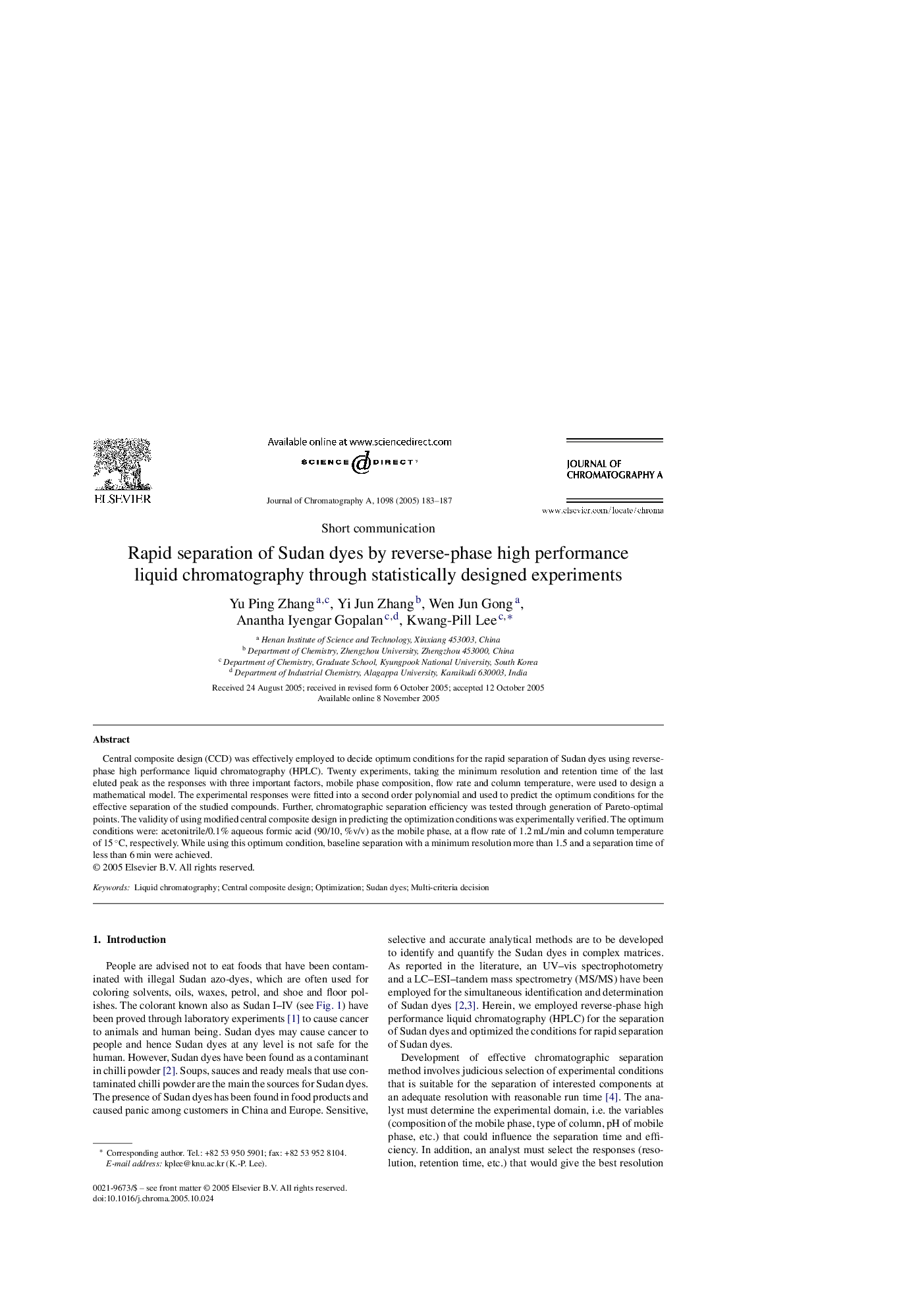| Article ID | Journal | Published Year | Pages | File Type |
|---|---|---|---|---|
| 9748504 | Journal of Chromatography A | 2005 | 5 Pages |
Abstract
Central composite design (CCD) was effectively employed to decide optimum conditions for the rapid separation of Sudan dyes using reverse-phase high performance liquid chromatography (HPLC). Twenty experiments, taking the minimum resolution and retention time of the last eluted peak as the responses with three important factors, mobile phase composition, flow rate and column temperature, were used to design a mathematical model. The experimental responses were fitted into a second order polynomial and used to predict the optimum conditions for the effective separation of the studied compounds. Further, chromatographic separation efficiency was tested through generation of Pareto-optimal points. The validity of using modified central composite design in predicting the optimization conditions was experimentally verified. The optimum conditions were: acetonitrile/0.1% aqueous formic acid (90/10, %v/v) as the mobile phase, at a flow rate of 1.2 mL/min and column temperature of 15 °C, respectively. While using this optimum condition, baseline separation with a minimum resolution more than 1.5 and a separation time of less than 6 min were achieved.
Related Topics
Physical Sciences and Engineering
Chemistry
Analytical Chemistry
Authors
Yu Ping Zhang, Yi Jun Zhang, Wen Jun Gong, Anantha Iyengar Gopalan, Kwang-Pill Lee,
